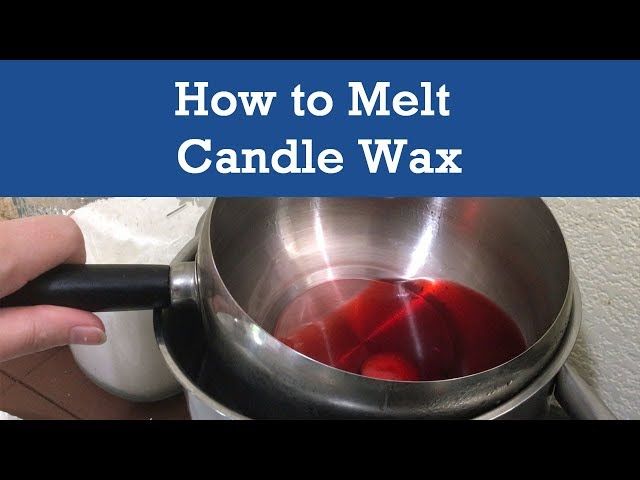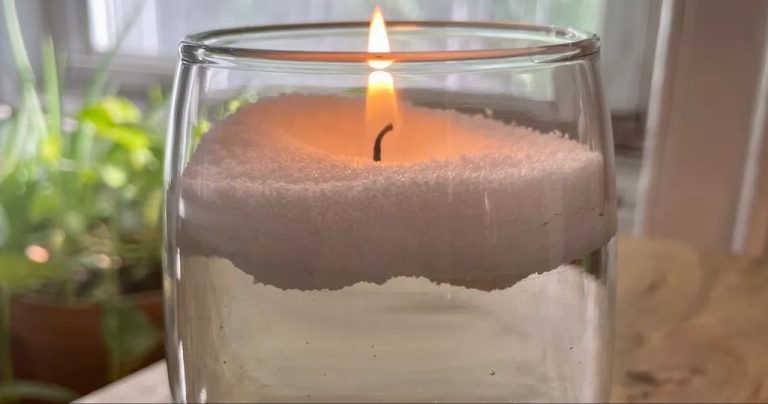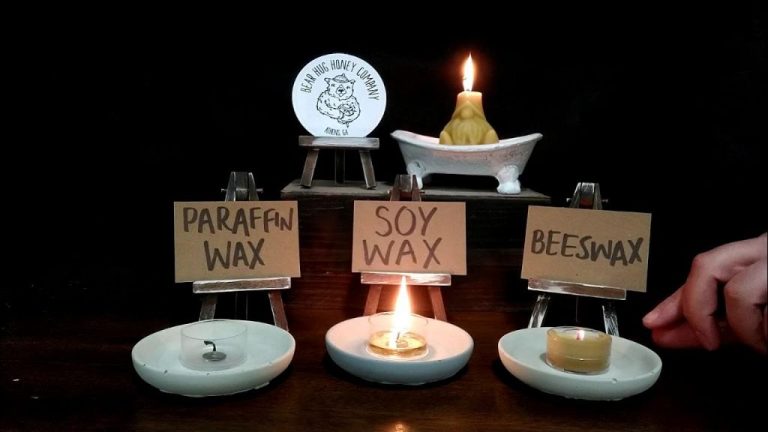What Is Made Up Of Wax?
What is Wax?
Wax is a substance made of long-chain hydrocarbons that is solid at room temperature and melts above room temperature. It has a low viscosity when melted but becomes hard and brittle when cooled (Encyclopedia Britannica, 2022). Wax is hydrophobic, meaning it repels water. This property makes wax useful for protecting objects from moisture.
Waxes can be divided into two main categories: natural waxes and synthetic waxes. Natural waxes come from animals and plants. Beeswax, for example, is produced by honey bees to build their honeycombs. Carnauba wax comes from the leaves of a palm tree native to Brazil. Synthetic waxes are made from petroleum, coal, or other chemical processes. Paraffin wax, used for candles, is a common synthetic wax (ThoughtCo, 2020).
Both natural and synthetic waxes have a wide variety of uses, from candle making to food production. Their hydrophobic and thermoplastic properties make them useful in cosmetics, polishes, and industrial applications. The main chemical difference between natural and synthetic waxes is the types of hydrocarbons they contain.
Sources:
https://www.britannica.com/science/wax-chemical-compound
https://www.thoughtco.com/what-is-wax-606146
Natural Wax Sources
There are several natural sources that produce wax, including bees, plants, and seeds.
Beeswax
Beeswax is secreted by honey bees from four pairs of glands on their abdomens to build the walls of their honeycomb. It consists primarily of esters of fatty acids and various long-chain alcohols. Beeswax has a high melting point range of 62°C to 64°C and is harder and denser than typical waxes. It has been used for centuries in many applications from candles to cosmetics.
Carnauba Wax
Carnauba wax comes from the leaves of the Copernicia prunifera palm grown only in northeastern Brazil. It is one of the hardest natural waxes with a very high melting point range of 82°C to 86°C. Carnauba wax is commonly used in automotive waxes, furniture polishes, dental floss, and food products.
Candelilla Wax
Candelilla wax is derived from the dried stalks of the Candelilla shrub native to northern Mexico and the southwestern United States. It has a melting point range of 68°C to 73°C. Candelilla wax is used as a substitute for carnauba wax and beeswax in many applications including lip balms, lotions, and polishing waxes.
Soy Wax
Soy wax is made from hydrogenating soybean oil. It was first developed as a natural alternative to petroleum-based waxes in the 1990s. Soy wax has a melting point range of 48°C to 60°C depending on the level of hydrogenation. It is commonly used in candle-making as well as in cosmetics and art mediums.
Synthetic Wax Sources
While some waxes occur naturally, the majority of commercial waxes today are produced synthetically from petroleum and other chemicals. Some of the most common synthetic waxes include:
Paraffin Wax
Paraffin wax is derived from petroleum residues during the refinement process. It consists of saturated hydrocarbons, giving it excellent chemical stability and resistance to oxidation. Paraffin wax is commonly used in candles, crayons, cosmetics, and food coatings (Blended Waxes).
Microcrystalline Wax
Microcrystalline wax also originates from petroleum residues. It has a higher molecular weight and melting point compared to paraffin wax. Microcrystalline wax is often combined with paraffin wax to modify the melting point and increase hardness. It’s utilized in cosmetics, polishes, and electrical insulation (Alafave).
Polyethylene Wax
Unlike paraffin and microcrystalline waxes, polyethylene wax is synthesized from ethylene gas. The polyethylene molecules vary in chain length, altering the properties. Polyethylene wax is commonly used to control viscosity, enhance lubricity, and increase binding strength in cosmetics, inks, and coatings (SpecialChem).
Uses of Wax
Wax has many uses in our everyday lives. Some of the most common uses are:
Candles
Candle wax is one of the most well-known uses of wax. Candles are made from a variety of waxes such as paraffin, beeswax, soy wax, or a combination of these. Candles provide illumination as well as ambiance. Some of the properties that make wax an ideal candle material are its low melting point, ability to hold a wick, and capacity to be scented.
Lubricants
Waxes make excellent lubricants because they are able to withstand high pressure and reduce friction between surfaces. Lubricating waxes are made from petroleum waxes, synthetic waxes, or vegetable waxes. They have applications in cars, manufacturing, construction, and other industrial uses where lubrication is needed.
Cosmetics
Wax has been used in cosmetics and skin care products since ancient Egyptian times. Waxes help cosmetics go on smoothly, maintain form, and protect the skin. Beeswax and carnauba wax are common waxes used in lip balms, lotions, creams, and various makeup products. The emollient properties of wax help hydrate and soften skin.
Crayons
Wax crayons are popular art supplies for children. Paraffin wax combined with color pigments creates the classic Crayola crayons we know today. Wax allows for smooth laydown of color and easy blending. Crayons are safe, nontoxic, and easy to handle for budding artists.
Food
Waxes like beeswax and carnauba wax are used to coat candy, gum, and some fruits like apples and citrus to add shine and protection. They are also used in food packaging. Waxes provide moisture barriers and prevent sticky or oily foods from adhering to wrappers. The FDA approves certain waxes for minimal and safe use in foods.
Wax in Nature
Wax serves various natural functions in plants and animals. One key role is providing a protective coating on leaves and stems of plants. The waxy cuticle reduces water loss and protects the plant from extreme temperatures, wind, and fungi. Beeswax, secreted from glands on the bee’s abdomen, is used to build the honeycomb structure of beehives. The wax’s waterproofing ability helps maintain a stable temperature and moisture level inside the hive. Birds also utilize waxes to waterproof their feathers and keep them flexible and durable. The preen gland near the base of a bird’s tail secretes an oily wax coating that birds spread onto their feathers during preening. This wax coating enables feathers to repel water and maintain proper aerodynamics for flight. Overall, wax in nature serves vital functions of insulation, waterproofing, and environmental protection across plant and animal species.
Wax Chemistry
The chemical composition of waxes is complex, but they are largely made up of long chain hydrocarbons called alkanes. These long hydrocarbon chains typically have between 20 and 40 carbon atoms. Waxes are esters formed by the reaction of a fatty acid with a long chain alcohol. The fatty acids in waxes also tend to be long, with 16-30 carbon atoms. The chemical structure gives waxes their unique physical properties like low melting temperature and non-volatility.

The long hydrocarbon chains in waxes make them hydrophobic and lipophilic. This allows them to repel water and adhere to other lipids and organic compounds. The ester linkages also make waxes more malleable and ductile compared to pure hydrocarbons. Overall, the chemical composition of waxes suits them well for their natural and commercial applications.
Wax Production
Wax is produced through various extraction and refining processes depending on the source. Beeswax, for example, is extracted by melting honeycomb with hot water, filtering and cooling to form wax cakes (https://www.beeculture.com/beeswax-production/). Refining and filtering further purifies the wax. Paraffin wax is extracted from petroleum through a distillation process where crude oil is heated and separated into fractions. The paraffin fraction is then chilled, filtered and refined to produce wax (https://www.sciencedirect.com/topics/engineering/paraffin-wax).
Quality control throughout wax production and refining is critical. Tests are conducted to measure melting point, hardness, color, clarity and purity. Contaminants like dirt, insects or reactive lipids must be minimized. The resulting wax must consistently meet specifications for the intended application, whether that be in candles, cosmetics, polishes, food or other products. Adjustments to the extraction and filtration process are made to optimize quality.
Wax Properties
Wax has certain key physical properties that define how it behaves and what it can be used for. Some of the most notable wax properties include:
Melting point – The melting point of wax refers to the temperature at which solid wax transitions to a liquid state. The melting point varies substantially depending on the type of wax. Paraffin wax, for example, has a melting point between about 46-68°C according to Wikipedia https://en.wikipedia.org/wiki/Paraffin_wax.
Hardness – Wax hardness depends on factors like the length of the hydrocarbon chains. Longer chains generally result in harder waxes. Wax hardness is graded based on scales like the ASTM D1321 needle penetration test. Softer waxes have higher needle penetration.
Color – Wax can come naturally colored or bleached white. Beeswax is typically yellow, while paraffin wax is usually white. The color results from compounds like carotenoids in beeswax. Bleaching can remove natural color to produce white wax.
Flammability – Most waxes are flammable, especially at higher temperatures approaching the flash point. The flash point is the lowest temperature at which vapors can ignite. Wax flash points are typically over 150°C. Precautions are needed when heating wax to avoid accidental fires.
Wax Industry
The wax industry is a major global market, with total revenues of over $9 billion as of 2021. According to MarketsandMarkets, the global industrial wax market size was valued at $7.35 billion in 2020 and is projected to reach $8.94 billion by 2025, growing at 4% CAGR. The leading producers of wax include ExxonMobil, Royal Dutch Shell, Sinopec, Sasol, and HollyFrontier which hold the majority of the market share. The floor wax and candle wax segments make up a significant portion of wax consumption worldwide.
The wax industry has seen steady growth over the past decade, driven by rising demand from emerging economies and applications like adhesives, cosmetics, plastics, rubber, and packaging. Key trends shaping the industry include developing bio-based and renewable waxes, innovations in microcrystalline waxes, and greater adoption of wax emulsions. The Asia Pacific region is becoming an increasingly important consumer and producer of waxes. Overall, the global wax market is projected to experience healthy growth in the coming years as diverse industries utilize waxes for improving product properties and performance.
Future of Wax
The future looks bright for innovative uses of wax. Researchers are exploring using wax for 3D printing materials, electrical insulation, and renewable bioplastics. Wax’s versatility lends itself to new applications as technology advances.
Sustainability is also becoming a priority in the wax industry. There is a push to develop renewable wax sources like soybeans instead of petroleum-based paraffin. Using biodegradable natural waxes can reduce environmental impact.
Potential alternatives to wax are being developed using synthetic polymers, ceramic composites, and silicones. However, wax still remains competitively priced and has properties that are difficult to mimic. The unique benefits of wax will likely keep it an important material into the future despite advances in alternatives.
Overall, innovation, sustainability, and competition from alternatives will shape the future of the wax industry. But wax has endured for centuries and will continue evolving to meet society’s needs.






